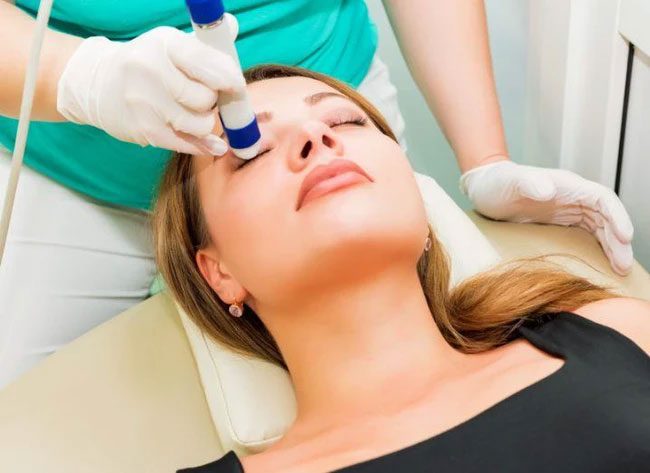Eye cancer can be hereditary in some families, but the genetic reasons are still being explored by researchers.
Carole Garber Friedman is a designer and model in the fashion industry, previously creating handbags for Henri Bendel. Before being diagnosed with eye cancer in 2018, Carole viewed the world through a creative lens filled with vibrant colors. However, everything changed when she was stung by a bee in her eye. An ophthalmologist diagnosed her with glaucoma, and during subsequent routine examinations, she was diagnosed with eye cancer – a malignant tumor of the choroid.
Carole Garber Friedman’s journey to treat eye cancer began from that moment. To date, after undergoing two surgeries, Carole feels incredibly grateful to have been saved and to have retained her vision.

The risk of developing eye cancer increases as you age.
When she left the hospital after her second surgery, she witnessed a child who had lost an eye due to cancer. Seeing the child with a black eye patch filled Carole with compassion. She decided that she had to do something so that no more children would have to wear black eye patches. Thus, she wanted to help raise funds for the Eye Cancer Foundation globally.
Eye cancer is a general term used to describe cancers that develop on or within the eye. According to Cancer Research UK (CRUK), the risk of developing eye cancer increases with age. Among the types of eye cancer, there is one called retinoblastoma, which usually affects children under the age of 5.
Eye cancer can be hereditary in some families, but the genetic reasons are still being further explored by researchers.
Symptoms of Eye Cancer
The signs of eye cancer may vary from one patient to another depending on the type of cancer involved.
The most common symptoms of eye cancer include:
- 1. Protrusion of the eye.
- 2. Total or partial loss of vision.
- 3. Pain in or around the eye (although this is rare with eye cancer).
- 4. Appearance of a pale lump on the eye’s surface.
- 5. Blurred vision.
- 6. Change in the shape of the eye.
- 7. Presence of a tumor on the eyelid or around the eye.
- 8. Seeing spots, unusual flashing lights, or strange squiggly lines before the eyes.
- 9. Changes in peripheral vision – being able to see straight ahead but not what is on the sides.
- 10. Black spots on the colored part of the eye – the iris – getting larger.
- 11. Eye irritation, red eyes, or chronic conjunctivitis.
Other eye conditions (not eye cancer) can also cause the above symptoms. Therefore, if you notice any abnormalities in your eyes, it is best to consult an ophthalmologist.
In the early stages of eye cancer, symptoms may be mild. In fact, an ophthalmologist is often the first to notice abnormalities during your routine eye exams.

Protect your eyes even on cloudy or overcast days. (Illustrative image).
How to Protect Your Eyes and Prevent Eye Cancer?
Ultraviolet rays (also known as UV rays) can burn the eyes, affect the cornea, and lead to cataracts… Particularly nowadays, the prevalence of UV rays is increasing, raising the risk of eye diseases. Therefore, the most important measure to avoid the harmful effects of these rays on the eyes is to limit direct exposure to sunlight, especially during peak UV hours, such as from 11 AM to 4 PM, or in the summer…
Studies have shown that exposure to artificial UV radiation – such as that emitted from tanning beds (indoors) – can also increase the risk of developing malignant eye tumors as well as squamous cell carcinoma of the eye.
- Additionally, the Skin Cancer Foundation has recommended other measures you can take to protect your eyes, including:
- Wearing sunglasses that block 99-100% of UVA and UVB light, so you should wear them year-round, not just when the sun is bright.
- Wearing a wide-brimmed hat for better protection of your face and eyes.
Protect your eyes even on cloudy or overcast days. Sunlight rays can penetrate through clouds, harming us year-round, not just on sunny summer days.


















































